
Several weeks ago when Apple released the first Thunderbolt-equipped Mac, the questions started pouring in on how quickly we’d be able to see the benefits of blazing external speeds.
Interestingly enough, no thunderbolt cables were even available until earlier this week when Apple started offering the Promise Technology Pegasus R4 & R6 RAID solutions. Now that the cables were available – we had to get our hands on a few to start answering the questions we’ve received in detail.
The first question we aimed to tackle came from Jay:
“Could I use a new 2011 Macbook Pro in Target Disk Mode over Thunderbolt? Wouldn’t it act just like an external hard drive enclosure?”
Logically, sure! Target disk mode allows one Mac with FireWire (or now with Thunderbolt) to be used as an external hard disk connected to another computer.
We decided to go for the gusto in our first test and installed a 240GB OWC Mercury Extreme Pro 6G SSD into the Main bay of our 2011 Thunderbolt port equipped 13-inch MacBook Pro. When we attached that to our 2011 Thunderbolt port equipped 27″ iMac via Apple’s Thunderbolt Cable in Target Disk Mode, we were expecting to get blown away by the raw data transfer rate.
Finally an external interface that wouldn’t bottleneck the 6Gb/s performance threshold of the drive.
What we found, however, was a modest gain in performance.
The FireWire 800 interface theoretically transfers data up to 100MB/s. In real life, peak rates typically are just below 90MB/s. Using Target Disk Mode over FireWire 800, we averaged 40MB/s reads and 38MB/s writes which equates to about 40% of the full capability of the FireWire 800 interface – as is typical with either an SSD or a hard drive in this situation.
Clearly there is some overhead in supporting Target Disk Mode.
By our logic, we figured that since Thunderbolt has a theoretical maximum data transfer rate of 1250MB/s we expected to see about 40% of that speed, or 500MB/s (which our SSD itself is capable of internally – see benchmark below). Unfortunately that wasn’t the case.
Using Target Disk Mode with an SSD over Thunderbolt averaged 74MB/s reads and 49MB/s writes, which was only a mere 4-6% of the full throughput capability that the Thunderbolt interface should be capable of.
Unless something changes with Target Disk Mode it probably isn’t wise decision to spend $50 on a Thunderbolt cable expecting to get massive speed transfers between your Thunderbolt equipped machines. For now, a simple FireWire cable is your more cost-effective solution.
This is just the beginning of our testing and a brand new technology. We’re excited to see what Thunderbolt is going to bring as it develops further.
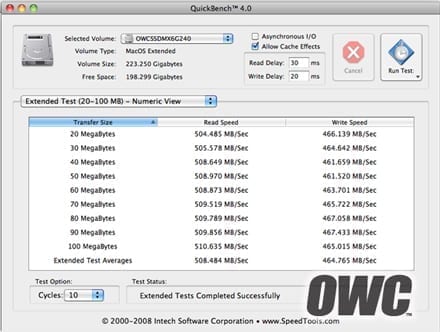


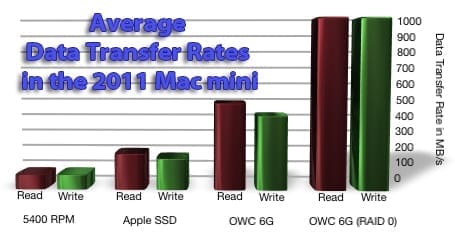
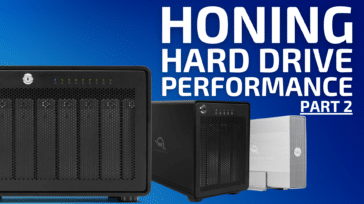
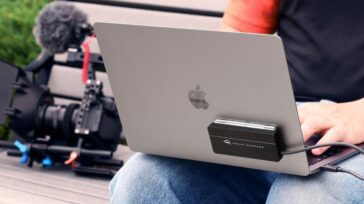
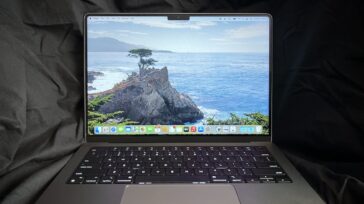
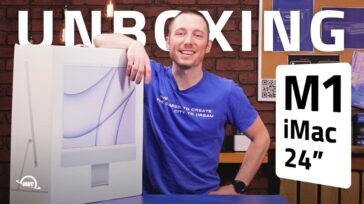


did a Blackmagic Speed test today using new mac pro connected to a mac mini via TB in Target Mode. The Mini has a 6 GB/s SSD inside of it. I got 220.1 MB/s Write speed and 300 MB/s Read
thats certainly better than before
Can anybody report on the performance of thunderbolt target mode performance after the october update. Thinking of putting two SSD’s inside a 2011 mac mini and booting off it using an iMac via thunderbolt. The little big disk is just too noisy and the pegasus is overkill for my needs.
I tested it today. The performance is still poor.
I know this is an old thread, but I couldn’t find a newer one. As far as the MacBook Air (mid 2011) goes, does the firmware released on September 12th (which specifically addressed target disk mode performance) provide better results?
Honestly, we haven’t sat down and tested Target Disk Mode performance with the new firmware; we were more excited about the MacBook Pro update around that same time, which happened to resolve a long-time problem with our 6G SSDs.
I couldn’t tell you if/when our test lab will be revisiting Target Disk Mode speeds over Thunderbolt at this time. However, since the updater specifically mentions Target Disk Mode performance, it should be improved from the results posted above.
I have a few comments on the Pegasus R6:
The product description is incomplete. It does not state what kind of disk it uses.
From the manufacturer’s page I found out it’s SATA, but it should be stated in your product description.
Also, it does not state which disk model is used. A RAID needs spares, if one of the disks fail. You should also carry the disk model in your inventory.
I would also like to suggest some more things:
I) You could remove the bundled disks and test with the disks you carry to verify if there are any incompatibilities.
II) You could get in touch with the manufacturer and see if it’s possible to sell a bare-bones (i.e. diskless) variant.
Since this product is being sold using consumer-grade disks, it makes little sense for international customers to import the disks as well the enclosure. Sometimes it is very hard to find specific drive models in one market. If I buy the disks locally, I am more likely to find spares as well.
At this point, the only unit that we’ve received and tested is the Pegasus R4 which came stock with Hitachi 0F10383 drives. The specific drive isn’t listed on the product description as the manufacturer can change drives at any time – with our own brand of enclosures, we always list the exact drive that the units are built with, so there isn’t any guesswork.
And at this time, Promise Technology is not offering a bare enclosure variant.
Bingo.
Target mode transfers between operating systems are not optimized for performance, only convienence. I am sure OS X was not adjusted for this transfer type. They are concentrating on making sure the end devices (storage) is zippy and the Promise box looks to be pretty fast. They also don’t want to cut out their storage partners from selling Thunderbolt devices as the market will never materialize of users only connect TB to TB on the Macbooks.
Once the market is up, I would bet NAB 2012 would be the real tech kick off, we will see so many devices, peripherals and initiators of this technology that any current concerns will be moot.
I was at NAB 2011 and to see the editors using a Macbook with FAST storage for once, the look on their faces was disbelief at the performance they were achieving allowing them to do things never before possible on a portable computer.
same question as for all badly done mass-storage reviews: what’s the latency and CPU usage like ? Throughput ain’t anywhere near the whole story.
There seems to be growing doubt about the adoption of Thunderbolt by the PC community. Basically, the only thing that TB offers over external PCIe is the integration of video output for a monitor. This comes at the cost of having to use an expensive controller chip.
The rub is that almost no one cares about having video in the same cable. What is wanted is fast storage without the added cost of TB.
The current offering of TB storage devices are moderately high end products where the additional cost may not be as critical, but that is not where the majority of the consumer market lies in my view. Unless Intel can rapidly co oxidize TB controller chips TB is unlikely to grow beyond niche status.
Greater attention to throughput is in order as the current devices are capable of saturating the TB connection. Unless something happens, and soon, I do not see TB being anything other than an “Apple thing”. It is very disappointing. Indeed, it may be a mistake. No wonder Intel is proceeding with USB 3 deployment.
I did some Thunderbolt Target Disk testing this weekend between two 2011 MacBook Pros with Apple (Toshiba) 3Gb/s SSDs (each capable of 200MB/s). Using both Finder Copy of a 1.2G file and QuickBench Extended test, the transfer rate averaged 62MB/s at best.
Doing some digging, I learned that Target mode is very different from connecting to an external Thunderbolt drive.
Target mode uses EFI. External Tbolt storage uses OS X.
OS X can do multi-threaded, multi-block DMA transfers. EFI can’t.
I hope this isn’t a case, on thunderbolt – target disk mode connecting on an external disk solution, rather than a computer to computer connection
If thunderbolt can deliver full throughput on target disk mode, you can have a external ssd to use on both your iMac or MBP system, that’s very useful for people with multiple devices, they just boot from one disk, and get maximum throughput.
Kudos to OWC, for bringing us this news. I hope you update us, when you have a OWC Mercury Elite Pro mini that supports Thunderbolt, and its throughput on target disk mode :)
I wouldn’t be so quick to reject people buying a Thunderbolt cable. The read rate was 85% better with TB. Sure, it’s not using the full throughput, but if a lot of data needs to be transferred, the time could be cut nearly in half. Plus, that TB cable will be useful if someone plans on using TB devices later.
Larry: is Thunderbolt support for networking and Migration Assistant still MIA? I guess I’ll just have to remain curious about the relative transfer rates of IP over FireWire 800 vs. IP over Thunderbolt.
Did you guys do this with the Thunderbolt Firmware update applied?
http://support.apple.com/kb/DL1407
Yes all thunderbolt firmware updates were applied.
The article said:
“Several weeks ago when Apple released the first Thunderbolt-equipped Mac.”
It’s been much longer than several weeks since Apple released the first Thunderbolt-equipped Mac.
Clearly the engineers are having fun at OWC. :-)
Did the iMac have an SSD as well?
No, the iMac had the stock 7200RPM Hard Drive, but the SpeedTools benchmark times the read/write speeds on the destination drive via the interface. The internal drive on the iMac doesn’t play into the equation.
Would further add – we did the same kind of tests with various MacBook Pro to MacBook Pro, etc – including solutions where both systems had an SSD inside… As the benchmark test is only actually hitting the Target Mode volume, the results – as expected – didn’t vary whether the system connected to the Target Model Mac had an SSD or an Hard drive inside.